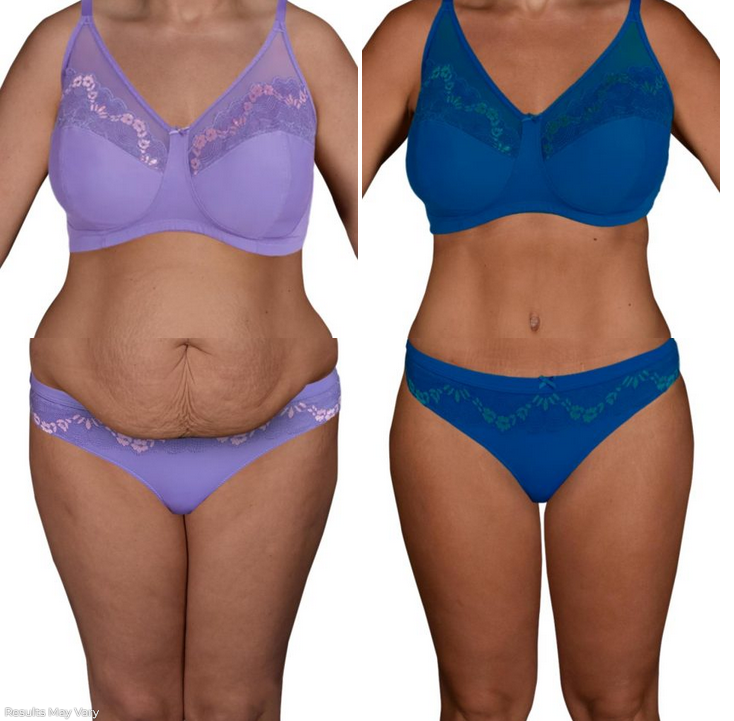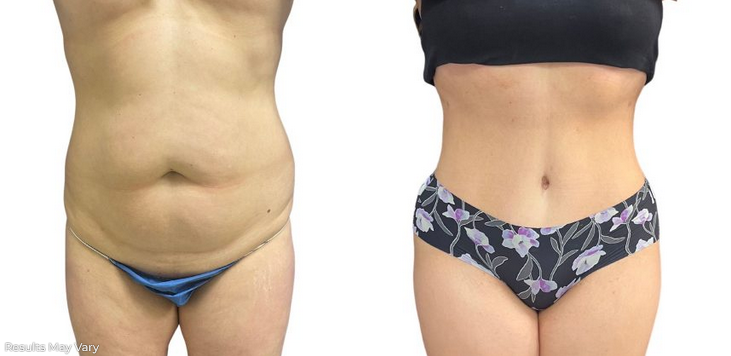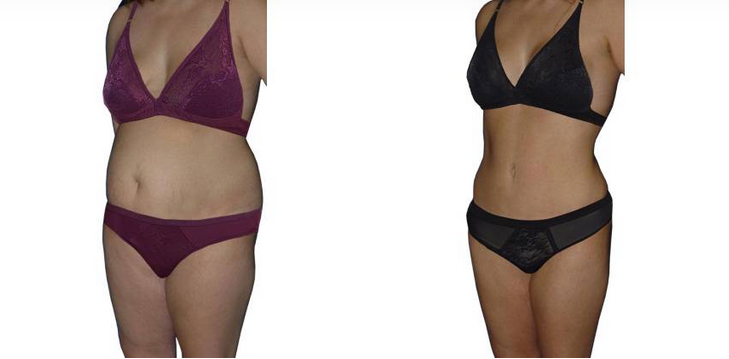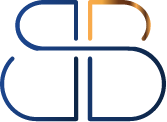mail: Surgeon@bodybybatal.com
phone: (310) 230-5911

Liposuction
Liposuction
Conveniently located to serve the areas of Beverly Hills and Tarzana, CA
Liposuction is a minimally invasive surgery that permanently removes unwanted fat deposits. According to the American Society of Plastic Surgeons, over 200,000 liposuction procedures were performed in 2020 alone, making liposuction one of the most popular cosmetic surgical procedures in the United States. (1) During liposuction surgery, small incisions are made, and a hollow tube called a cannula is inserted into the treatment area to suction away unwanted fatty tissue. Today’s liposuction procedures are safer and more effective than ever and offer patients a way to target stubborn areas of fat that are resistant to diet and exercise.
Areas that are commonly treated with liposuction include the abdomen, love handles, flanks, pubic area, arms, thighs, and back. Recent advances in liposuction technology have made this procedure even more versatile, and surgeons can now safely treat even delicate areas like the pubis, ankles, and neck. In selective cases, I was able to perform a breast reduction via liposuction alone. Although patients can see a dramatic improvement, it’s important to remember that liposuction is a body contouring procedure, and is not a weight loss solution. But for those looking to put the finishing touches on their physique, liposuction is an effective way to enhance their appearance and finally achieve their aesthetic goals. My name is Dr. Obaida Batal , and I perform liposuction using the most advanced techniques available today. If you’ve been considering a body contouring procedure or other cosmetic surgeries, I invite you to contact my offices in Tarzana or Beverly Hills to schedule a personal consultation and learn more about what’s possible with liposuction. My friendly staff and I are looking forward to meeting you, and you can get started by calling (310) 230-5911 or filling out a contact form at your convenience.
Before and After Photos



About Liposuction Today
Surgeons have been attempting to improve the appearance by removing unwanted fat for over a century, however, it wasn’t until surgeons began experimenting with suction in the 1970s that the foundation of this procedure became established.(2) Since then, the techniques and devices used to perform liposuction improved exponentially, and today’s patients enjoy safer, simpler procedures with more efficient technology, more comfortable recoveries, and beautiful results. Today’s liposuction procedures incorporate the use of tumescent fluid, an approach known as tumescent liposuction. This was one of the most significant improvements made to the procedure and was pioneered by a California dermatologist named Dr. Jeffrey Klein. Before the procedure begins, the area is infiltrated with this specially formulated fluid, which reduces bleeding, numbs the treatment area, and makes fat easier to remove. Additional recent improvements include the addition of energy to liposuction procedures. Energy-assisted liposuction techniques that I perform include:
Power-Assisted Liposuction
The addition of a motorized vibrating cannula allows the surgeon to use less force when manipulating the cannula through the fat deposit. Before power-assisted liposuction, or PAL, surgeons had to use a considerable amount of strength to penetrate the fat deposits and create disruptions in the fatty tissue and allow for it to be suctioned away. The rapidly vibrating cannula allows us to make smoother, more controlled passes during the procedure. This also makes fat easier to remove, even in areas where fat tends to be more fibrous. This allows for a faster procedure.
Laser Lipo
Laser-assisted liposuction modalities like SmartLipo have some considerable benefits. The laser energy creates a thermal effect, heating and liquefying fat while leaving the surrounding tissue undamaged. This makes the fat easier to remove so that I can remove more fat more efficiently. The thermal effect also coagulates the tiny blood vessels that run through fatty tissue, so there is less bleeding during the procedure and less inflammation after the procedure. Perhaps one of the biggest advantages of laser-assisted liposuction is the effect it has on the overlying skin. Oftentimes, after large amounts of fat are removed, patients are left with loose skin in the treatment area. But with laser lipo, the heat created by the laser energy causes the collagen in the dermis to contract, so that the skin retracts and tightens to the newly created contours. This thermal effect also kick-starts the skin’s production of collagen, so patients enjoy firmer, more robust skin quality over time.(3)
VASER Liposuction
VASER is an acronym that stands for Vibration Amplification of Sound Energy at Resonance. After the area has been infiltrated with tumescent fluid, a cannula that emits ultrasonic waves is inserted into the treatment area. These ultrasonic waves agitate the tumescent fluid, essentially creating vibrations that loosen the fat cells from the surrounding tissues and make fat removal more efficient. Because the fat can be more easily suctioned away, the surrounding tissues undergo less damage, and I can sculpt more precisely while the patient has a less uncomfortable recovery. The heat generated from ultrasonic waves is also thought to coagulate the collagen and elastin in the fibro septal network, making the skin less pinchable and producing a tighter feeling of the skin.
Benefits
At Batal Plastic Surgery, I’ve put my extensive training and experience to use, while also incorporating the latest technology and comprehensive treatment options so that patients enjoy the very best results. This allows me to remove both deep and superficial layers of fatty tissue, so that I can sculpt the results that achieve my patient’s goals. For example, I can access fat in the deep plane when treating love handles and flanks so that I can reveal the internal bony and muscular structures. Those ratios of those structures will produce the final results. If the patient’s natural internal hip-to-waist ratio is ideal, it produces an hourglass figure for female patients or smooth lines for male patients. However, if the ratio is minimal, there is less I can do to produce the hourglass shape. I make sure I give the patient a reasonable expectation in the consultation and in the preoperative visit as to what I think their hip-to-waist ratio is. When performing abdominal liposuction, I can carefully remove strategic amounts of fat in order to accentuate the patient’s abdominal muscles, a procedure also known as abdominal etching. Male patients often request a defined V line above their groin, and with VASER, this can be a simple addition to their ab lipo. I must say that some etching procedures in male patients are performed using fat transfer to pockets created to produce six or eight-packs. I do not advocate for that at this point. I, however, will keep my mind open if more information and long-term results are published and sustained.
- Upper and lower abdomen
- Flanks, or love handles
- Arms
- Thighs
- Back, including bra fat
- Axilla, or armpit fat
- Neck and jawline
For patients with lax skin, I’ll also perform a skin tightening procedure at the same time as the liposuction surgery. This ensures that they’ll have optimal skin retraction and ideal contours after they’ve healed. Helium plasma devices can be inserted into the treated area after the fat is removed, and work beneath the surface to create a thermal effect that allows the skin to safely contract for smooth, even results. There are multiple tools for that like Bodytite and Renuvion. I use a similar technology based on Helium plasma that produces both a coagulation of the collagen and elastin without penetrating the layer close to the skin. This makes the risk of skin thermal injury very minimal.
Candidates
If you’re looking to get rid of stubborn pockets of fat that won’t budge with diet and exercise, liposuction might be the right option for you. Liposculpture can also be used to enhance the results of other cosmetic surgeries by sculpting and contouring the surrounding areas. If you’re getting a facelift, tummy tuck, or any other type of body contouring surgery, liposuction can help you achieve your desired outcome. It’s important to remember that although it’s minimally invasive, liposuction is still a surgical procedure.
Ideal liposuction patients are:
- At a stable weight and within close range of a healthy BMI
- Looking to target isolated areas of fat
- Have reasonable, well-informed expectations
- Willing to responsibly commit to a preparation and recovery period
- Are non-smokers or willing to quit for several weeks before and after their procedure
Personal Consultation
Our personal consultation is a chance to talk more about your goals, so that I can learn more about you, and you can learn more about your options for body contouring. I’ll review your medical history and examine the areas that you’d like to treat in order to ensure that you will benefit from a liposuction procedure. Not everyone is a good candidate for liposuction, but we’ll be able to determine the best approach, and what procedure or combination of procedures will be the most effective for you during this important part of the process. By the end of the consultation, you’ll be able to make a confident decision about how to proceed. To get started, schedule a consultation at my offices in Tarzana or Beverly Hills by calling (310) 230-5911. You can get a better idea of what’s possible and the results you may be able to look forward to by taking a look at Before & After photos.
Preparation
It’s important to make sure that you are in optimal health leading up to your liposuction procedure. My staff and I will give you detailed instructions on how to prepare for your surgery and are always available to answer any questions you may have leading up to your procedure.
Pre-operative guidelines for surgery typically include:
- Stop smoking several months in advance of your procedure. You’ll also need to remain nicotine-free for the duration of your recovery. Among the other health risks, smoking is highly detrimental to the healthy circulation required to heal from surgery. Patients will be given a nicotine level test before surgery.
- Avoid herbal supplements. While many surgeons ask patients to discontinue medications like aspirin, and other anti-inflammatory drugs, I choose to evaluate each patient on a case-by-case basis to assess whether this is necessary.
- In order to enjoy the best results from your liposuction procedure, it’s important to be at a stable weight so that I can identify and address the specific areas of unwanted fat. Although liposuction permanently removes fat cells, the remaining fat cells can increase in size if weight is gained after your procedure. If the weight never changed after the procedure, the results are permanent. However, if there is weight gain, you are likely to gain that weight in other areas (those not targeted by liposuction). We have to keep a sliver of fat layer in the treated area to maintain skin smoothness, and that layer may slightly increase in size in the case of weight gain and this can marginally and rarely produce a negative effect on your results.
- You’ll also need to arrange a ride home from the procedure, as you will be unable to drive yourself.
Procedure
Tumescent liposuction can be performed with local anesthesia and sedation, which avoids many of the risks that accompany general anesthesia, and provides for a more comfortable recovery. General anesthesia is also a valid option chosen by the majority of the surgeon. I resort to general anesthesia if the patient strongly opted for that or if there is a medical background that necessitates it. I talked in a previous blog about the rationale of using extensive local tumescent anesthesia sedation, a process that blocks the pain signals from traveling to the brain during and immediately after surgery. While the local anesthesia and the sedation are wearing off, those signals will start traveling to the brain without flooding it. The brain in turn will interpret those signals as a less intense form of pain. In General anesthesia cases, if not accompanied by extensive local infiltration, it is more likely for the brain to order the nerves in the treatment area to become hypersensitive since they continue to transmit pain signals even though the patient is unconscious, and the abnormal barrage of neural activity continues after the surgery is complete, so patients, in fact, can experience heightened and unnecessary pain. By directly numbing the treatment area with local anesthetic, and the lidocaine contained in the tumescent fluid, this can be avoided. And, because the numbing effect lasts well after the procedure is complete, patients are able to remain more comfortable during the most difficult initial phase of their recovery.
Once the patient is comfortably sedated, I make small, discreet incisions adjacent to the treatment area. Large volumes of tumescent fluid are introduced, and once it has taken effect, we begin aspirating fat. The cannula is inserted into the incision, or adit, and I will make steady even passes with the cannula, to ensure that the area is evenly treated. I often use more than one technique in order to reach the various layers of fat and sculpt satisfactory results. The last phase of the procedure is often a process called fat equalization. Suction is no longer used, and instead the cannula is used as a sculpting tool to ensure smooth contours. Skin tightening technology can then be used to eliminate any lax skin. The tool I use to tighten skin is helium plasma.
Targeting the fat from multiple angles is of paramount importance. A surgeon can not harvest the fat from one angle. If done, it will likely produce irregularity, stripping, and an inadequate fat harvest. I currently use curved cannulas to decrease the number of incisions while accessing multiple angles. However, it is essential for the patient to know that they should plan on receiving multiple incisions for the reasons mentioned above.
Recovery
I usually tell the patients that on average, I expect that 5-7 days of downtime is needed for the initial recovery from liposuction, depending on the area and scope and scale of the procedure. However, I instruct all my patients to start walking immediately after the procedures, and obviously the day after the surgery. A follow-up is required after a week to remove any drains and exterior sutures as well as to check on the overall healing process. Patients will be required to wear compression garments 24/7 for the first few days to reduce swelling and promote healing. I keep most of the small incisions open to drain the fluids and they heal exactly the same with and without sutures. Mild to moderate bruising will also be noticeable for the first 1-2 weeks. Most patients can return to work in as little as 5-10 days after liposuction. In some cases, I have patients return to office work immediately, or the next day but this is not the rule. Neck and Jawline recovery is much quicker from a pain standpoint, but the final results take relatively longer because the volume of the swelling occasionally exceeds the volume of the initial superficial fat.
Results
The first week is dominated by swelling, and the second to eighth week is the induration phase, which is a hardening of the tissues mixed with some swelling. The tissue then softens up after that to become normal again at 3-6 months. As it does, patients will see their final results take shape. On average, I expect to see 50-60 % of the results by the end of the first week, 70-80 % by the end of the first month, and 90-95% by 3-4 months.
Maintaining a stable weight and a healthy lifestyle will ensure that your results can be enjoyed for many years to come.
Corresponding & Complementary Procedures
Many patients are interested in accentuating their breasts or buttocks, and the fat removed during liposuction can be used to do just that in a fat transfer procedure, which is performed immediately following liposuction. I use closed-system fat collection technology that ensures the fat remains sterile, and that fat cells survive the removal process. After the fat is filtered and purified, it can be injected into the necessary layers of tissue in order to sculpt the desired results. Fat transfer procedures are also known as autologous fat grafting because the living fat cells in the harvested fat are able to establish a healthy blood supply and graft to the existing fat tissue. I carefully inject the fat into multiple layers of the breast in order to enhance cleavage and projection. When performing a Brazilian Butt Lift, I use ultrasound technology to ensure that fat is placed in optimal depths for the very best results.
How Much Does Liposuction Cost in Beverly Hills?
Liposuction procedures are tailored to the individual’s needs and unique anatomy. As a result, the areas being treated, the amount of fat being removed, and the price of the procedure varies from patient to patient. We’ll be able to give you an accurate estimate for the cost of your liposuction surgery following your personal consultation. I currently still charge the same as before inflation. I currently charge $899 per area for Smart Lipo, and $1500 per area for Smart Lipo with Helium Plasma. Additional surcharges or discounts could arise from additional weight gain or loss and previously treated scarred areas. The full quote will be given based on your specific situation upon in-person or virtual consultation.
References
- American Society of Plastic Surgeons. 2020 National Plastic Surgery Statistics.; 2021. https://www.plasticsurgery.org/documents/News/Statistics/2020/plastic-surgery-statistics-report-2020.pdf
- Bellini E, Grieco MP, Raposio E. A journey through liposuction and liposculture: Review. Annals of Medicine and Surgery. 2017;24:53-60. doi:10.1016/j.amsu.2017.10.024
- Shridharani S, Broyles J, Matarasso A. Liposuction devices: technology update. Medical Devices: Evidence and Research. Published online July 2014:241. doi:10.2147/mder.s47322
